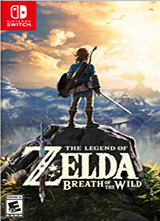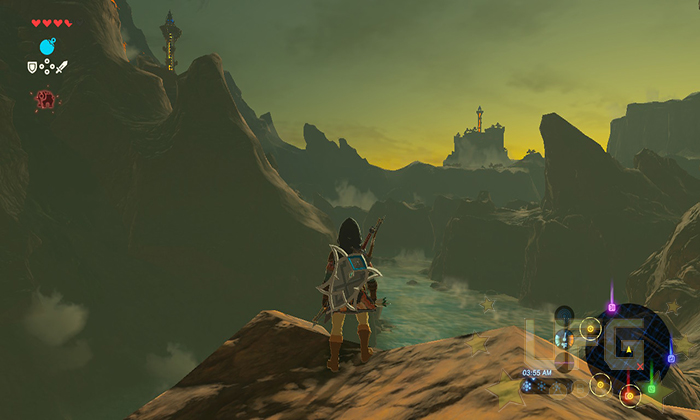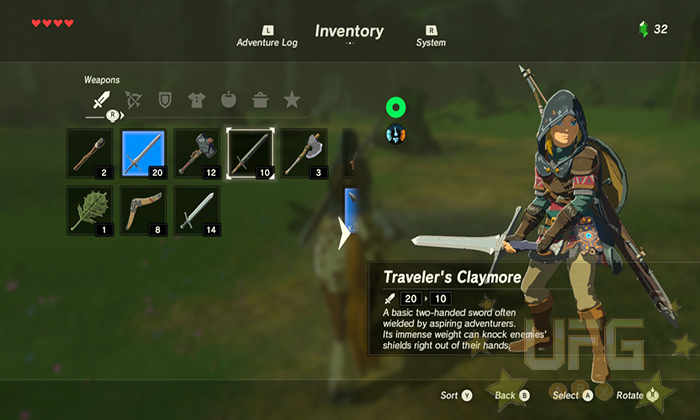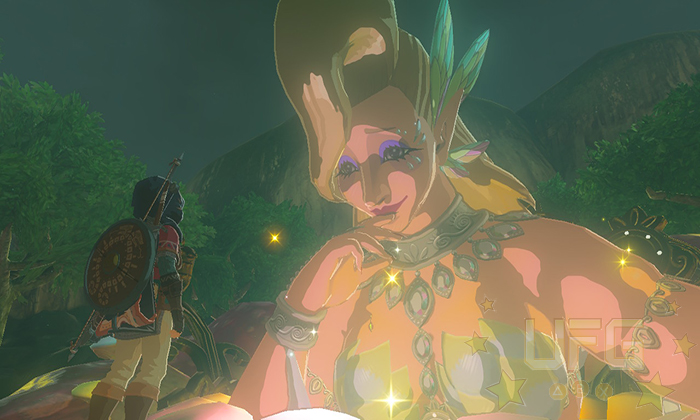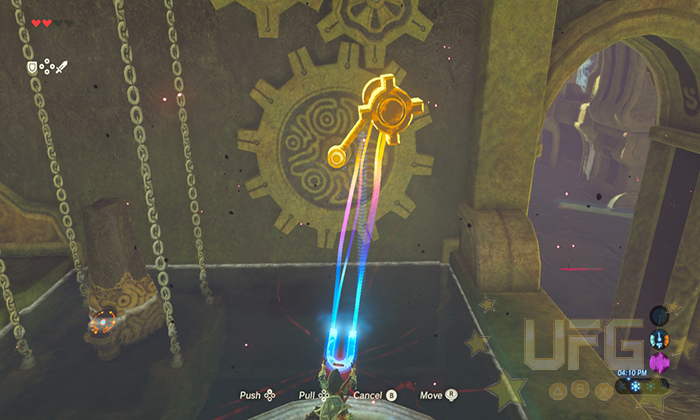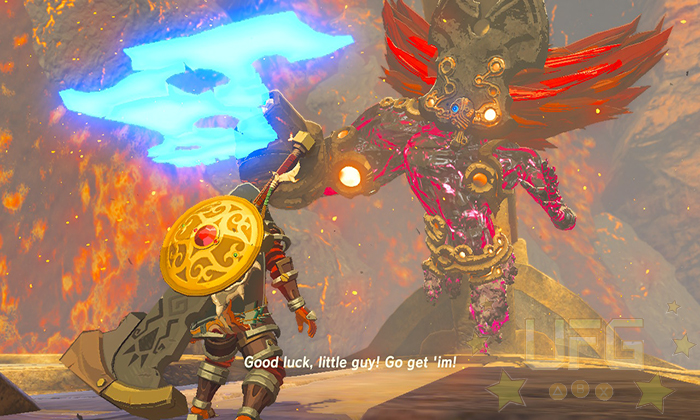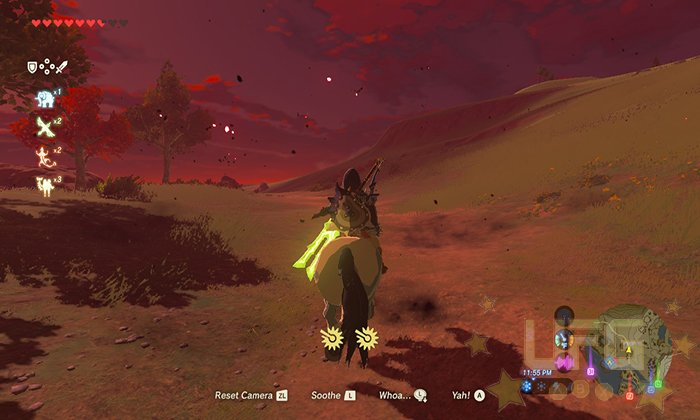The Legend of Zelda: Breath of the Wild
Time is invaluable. An obvious statement, yet I’ve only just come to realize that this constantly draining commodity has to be managed better the older you get. Family, friends, work, play – balancing your priorities is key to not feel like you’re wasting time. This is why when I hear a developer talk about how expansive their open world game is, I groan. There are only a few open world games that aren’t needlessly bloated to satisfy the delusion that a game’s quality is (only) synonymous with how long it takes to complete or how many activities are available within a given space. And while that is true to some degree, the reality is that this type of design can come off as anti-consumer. It’s as if developers don’t value our time the same way we do. Thankfully, The Legend of Zelda: Breath of the Wild doesn’t suffer from this sort of thinking. At least, not entirely.
Like every Zelda game, Breath of the Wild (BotW) follows the exploits of Link, Zelda, and Ganon; a constant struggle that is depicted in a slightly different manner with each title. However, BotW is somewhat more unique, given how it plays into this cycling idea. Here, Calamity Ganon (his latest moniker) is perpetually routed by a princess and legendary hero. Thousands of years later, he would rise again, only to be defeated once more by another princess/warrior pair. That is until he wised up, attacking from the ruins beneath Hyrule Castle. In doing so, Ganon was able to take control of the four Divine Beasts, living vessels that helped seal him away centuries prior. He then laid waste to the entire kingdom, gravely wounded Link and ended their ongoing conflict. Or so he thought. Fast forward one hundred years later and Link is found sleeping in a sacred Sheikah Shrine of Resurrection. Awakened by a familiar voice, he is instructed to grab a piece of ancient technology (the Sheikah Slate) before leaving the makeshift tomb. Unable to remember anything from his past, he follows the voice’s commands and makes his way to the surface.
Side note: Due to the nature of reviewing such a respected franchise, I wanted to take this time to get all of my…hyperbolic statements out of the way. You know, the ones that offer praise while totally overlooking any of a game’s flaws because of how much you love the series? I want to be fair but feel the need to geek out a bit. So, here goes. Breath of the Wild is easily, one of the best Legend of Zelda games I’ve ever played. And in some moments, I’d argue it’s one of the best open world games ever released. While I don’t recommend buying a Nintendo Switch just for this game (given the fact that it is also on the Wii U), I couldn’t find fault with that action after experiencing the game in “full”. And…breathe. Now that that’s done, back to being critical!
Upon leaving the shrine, gamers will be greeted with a ruined Hyrule. From here they’ll learn the state of things – how Calamity Ganon has been trapped within the walls of Hyrule Castle, yet his influence still permeates throughout the land. Monsters frequent the open plains, the once great kingdoms and revered cities have been made low, and the Divine Beasts are running amuck. Basically, Hyrule has become a very dangerous place since Link’s departure.
It’s also a wonderful place to explore. This is, in part, due to the world’s design and how it correlates with different gameplay elements. For instance, in a lot of open world games, quests are placed in important locations (villages, cities, some rural area, etc.) while the spaces in between are peppered with activities that are of no consequence to the game’s narrative. A lot of them don’t even reward the player with anything significant; the slight experiance boosts gained from dispatching a group of enemies to rescue an NPC become less and less attractive over time. After a while, they start to look like what they are, diversions. Their inclusion, of course, isn’t inherently bad. It can be nice having stuff to do before the next big quest, as long as they aren’t used as a crutch to hold up a weak campaign.
BotW has its share of extracurricular activities as well. The difference is in their implementation and overall saturation. For one, the developers didn’t flood every square inch of available land with mini-games, destressed NPCs, or enemy outposts. Don’t get me wrong, there are a ton of places to see and things to do while traversing Hyrule. It’s just that the developers made sure to better spread these elements across the map, making their presence seem more meaningful. Stumbling upon a cave made from a giant skull during a sandstorm in the desert is thrilling. It didn’t matter that there was another giant skull located at the base of a mountain given the distance between the two. The placement of these elements made discovering them seem like a rare find. Not only that, but there would usually be something inside these places; likea chest of goodies that’s unlocked once all of the surrounding monsters are slain. This “less is more” approach actually encourages exploration, something a developer would want after creating such an open world.
Secret locations and special items had me gleefully rounding hills and jumping off cliffs. What was great was that my curiosity usually paid off. Like “this just seems like a place someone would hide buried treasure…oh look, a new sword imbued with electricity!”. This sort of thing happened even if you didn’t wander around like I did. Most quests are placed in such a way that traveling to them often leads to interesting finds. A side quest involving a missing Gerudo warrior lead me straight to a hidden fairy fountain. This was a welcomed site at the time considering that the great fairies in BotW can upgrade Link’s clothing, therefore increasing his defenses.
Interestingly enough, another reason why this version of Hyrule is so inviting is because of how difficult it can be getting to where you need to go. Sometimes you’ll have to deal with a changing climate. Climbing a snow-covered mountain or sand surfing in the desert without the proper clothing will result in a loss of hearts. Other times it’s Link’s limited stamina, which governs how high he can climb and how far he can run or swim. There are also powerful monsters (mini-bosses) that roam the land, all of which can kill an inadequately equipped Link in one blow. Now at first, I thought these types of elements were just there to slow the player down. I mean, they are to a degree. But after spending a significant time in Hyrule, I found them to be a welcomed addition. Instead of having long, boring treks back and forth between places of interest (I’m looking squarely at you Final Fantasy XV), we get a real sense of adventure. Safely arriving at the Goron village beneath Death Mountain after narrowly succumbing to the incredible heat and a giant rock golem, is a feat in and of itself.
Moving away from the open world trappings for a bit, I really enjoyed how Nintendo changed some of the staples this series is known for. Take the way dungeons are designed. Gone are the sprawling labyrinths of old, where players would solve puzzles using newly found items before facing a boss. In BotW, they have been modified into two distinct types: small dungeons and large ones. Shrines, scattered all over Hyrule, act as fast travel points once activated by the Sheikah Slate. Travel down inside one and you’ll venture into one of the small dungeons. One of the first differences, besides the its size, is that you never have to locate items to solve its puzzles. Most of everything you need is given to you fairly early on with the Sheikah Slate; once you’ve unlocked its few abilities (remote bombs, water manipulation, freezing time), you’ll use them for the rest of the game. The second difference is that there are no bosses to face.
There are 120 shrines in the BotW. All of them are designed around using the three to four abilities found in the Slate. So, Nintendo had to find a way to make each and every one of them stand out or risk them becoming a dull diversion. To my surprise, every shrine I conquered felt unique. Somehow Nintendo was able to create a significant number of well-crafted puzzles that didn’t require a lot of items to solve. These bite-sized dungeons are fun in their own right, but they also provide Spirit Orbs. By collecting four Spirit Orbs and visiting a statue of the Goddess Hylia – an ancestor of Princess Zelda – you’ll gain either more heart containers or a longer stamina meter. Basically, they are dungeons that don’t require a large investment of time to complete, yet still reward you with something valuable. Awesome!
The larger dungeons are actually the Divine Beasts themselves. Each beast will need to be subdued via a boss fight before Link can enter them (think Shadow of the Colossus and you’ll be close). Once inside, Link will need to connect his Sheikah Slate to different nodes in order to regain control over these mighty living weapons. These dungeons are great because of the way the Slate helps to solve their puzzles. Once you’ve found the map/blue prints for the one of the beasts you’ll be able to alter its innards, changing your surroundings. Raising Vah Ruta, the trunk of the elephant-like beast, above its head will create a waterfall of sorts, causing a series of platforms to rotate like a Ferris wheel. These dungeons do come with bosses, namely, four different Ganon apparitions. A keen eye and quick reflexes are required to take these foes down. Well, most of the time – as you go about your journey, you’ll naturally get stronger making later encounters easier to deal with. All of them provide an enjoyable experience however.
There is so much to talk about when it comes to the Breath of the Wild. I can go on and on about the how I enjoyed cooking different dishes with collected ingredients, granting me temporary boosts in power, speed, etc… Or how great the world looks – a flowing river that splits the region in half looks majestic from atop an ancient tower. It would be easy to continue bombarding you with the game’s praises. Unfortunately, BotW isn’t as perfect as some make it out to be.
There are two game mechanics that should have never been borrowed from other titles of this ilk. The first being breakable weapons. I don’t understand why this is still a prominent feature in video games. At one point, it was about realistically building tension; a weapon breaking while trying to stop a zombie may have provided an “oh $%^!” moment in the past. But nowadays, the fragile weapon concept has gotten out of hand. This is especially true with the BotW. Why are my metallic weapons breaking with only a few skirmishes? I mean literally, some of them will crack after ten to eleven swings, some sooner. What’s worse is that most of Link’s enemies can take a good beating before dying. And the boss battles…while it might be exhilarating to defeat a powerful foe with your last rusty sword, having multiple weapons shatter in the middle of the fight is beyond frustrating. Thankfully, there are a few special weapons that can be repaired after breaking and one unbreakable weapon. Still…
The second mechanic that should have been left by the wayside to die involves the Sheikah Towers. Also acting as fast travel locations, these towers must be climbed before they can be activated. They don’t add anything to the game whatsoever – no unique puzzles, crazy encounters, nothing. They’re more tedious than anything else. If it wasn’t for the fact that they are needed to fill in portions of the map, revealing key locations and landmarks, I would have avoided them entirely.
These two annoyances can’t possibly derail the entire experience as most of BotW is great. What did cause me major concern was the sudden drop in frames whenever the Switch was docked. For some reason, when I was using the Switch as a handheld, it was smooth sailing. When I started playing it as a console, during action packed moments, the frames would stutter about. At one point the game froze while I was battling some lizard creatures, resulting in my death after it snapped back to action. To be fair, this is probably more of a system issue given the nature of the problem. It also wasn’t a constant occurrence. That said, it was frequent enough to make me consider keeping the system mobile.
The last thing that ruffled my feathers was in the game’s plot. I understand that Zelda has never been known for the deepest of narratives. But with the inclusion of voice acting, I thought we’d get something with a little more oomph. Really, most of the plot is doled out at the beginning and end of the game with little bits of exposition sprinkled in the middle. Flashbacks, manuscripts, and talkative NPCs do help to establish a back story. I just wish there was more substance besides the normal Princess and Link vs. Ganon theme. That could be asking too much. Then again, this is the 19th release in the main series. Baby steps.
The Legend of Zelda: Breath of the Wild is great game. There’s no doubt about that. At the same time, it does have some game mechanics that wore out their welcome years ago. An inconstant frame rate that affects gameplay can’t be looked over either. That said, I feel that most people will thoroughly enjoy their time in BotW. Even if they aren’t diehard Zelda fans who kind of, sort of, only bought the Switch for this title!
Gameplay:
8
This is one of the best Legend of Zelda games I’ve ever played. That said, I believe Nintendo borrowed some bad elements from other open world games.
Graphics:
9
Zelda is certainly a pretty game. The drops in frame rate when docked is a problem, and while the Switch itself might be to blame, other titles we’ve played didn’t suffer from this issue.
Sound:
10
The music and (surprisingly) the voice acting was great!
Replay Value:
10
I’ve beaten the game but I haven’t “beaten” the game. There is a plethora of secrets that I’ve yet to find and I do enjoy exploring Hyrule.
Final Score:
9.3
